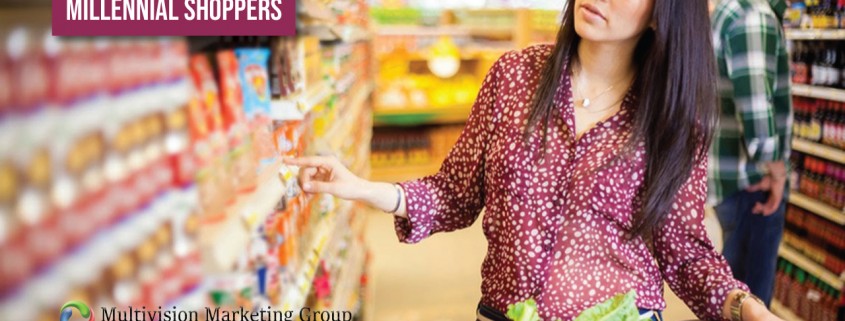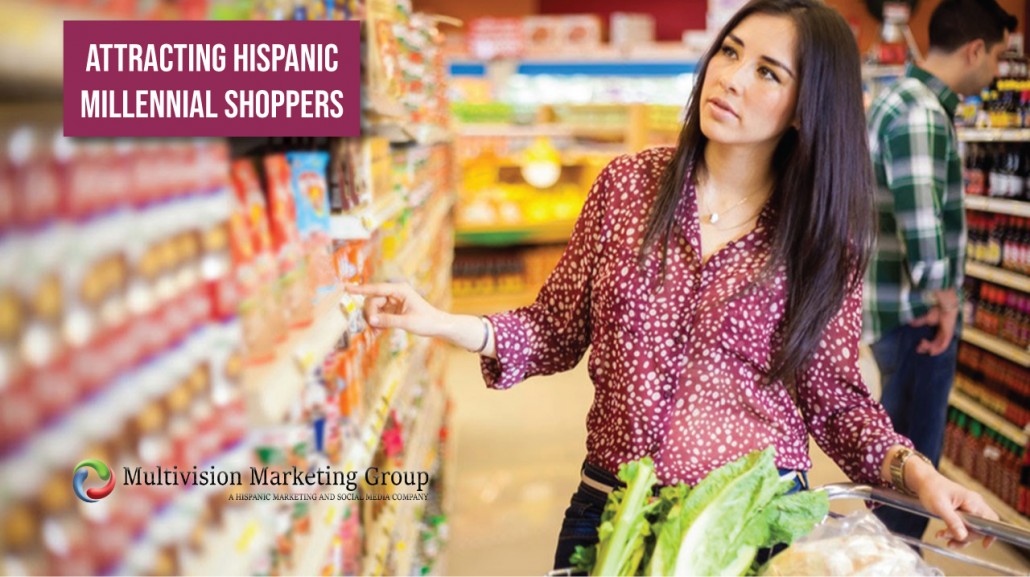ATTRACTING HISPANIC MILLENNIAL SHOPPERS
When it comes to appealing to a certain segment of any population, there’s a notable difference between knowing where people shop and what they buy. For example, knowing that 61% of U.S. Hispanic Millennials have shopped at a Hispanic supermarket once in the past year is helpful, but it’s only one layer of insight. A second layer, among myriad others, highlights that 51% of Hispanic Millennials are drawn to Hispanic grocers because they have a panadería (Hispanic bakery) or tortilla shop.
Why look at Hispanic Millennials? Because as multiculturalism and diversity gain prominence in the U.S., these young consumers will play an integral role in spending trends over the next 20-30 years. Notably, 40% of American Millennials are multicultural, and more than half of this group are Latinos. And while multicultural Millennials share the same affinity for digital technology as other the general Millennial population, more than one-fourth of all U.S. Millennials are first- or second-generation immigrants with strong ties to their global origins, which will affect their product purchases and brand loyalty.
The preferences and needs of Hispanic Millennials that Nielsen has observed are even more impactful from an opportunity perspective within certain Hispanic-rich cities like Los Angeles. Specifically, half of the Millennials in Los Angeles are Hispanic, and Nielsen expects that concentration to grow to 54% by 2020.

Nationally, 57% of U.S. Hispanics say they’re drawn to Hispanic grocers because they typically offer the products and brands that reflect their cultural tastes. What’s noteworthy is that younger Latinos, who are open to other cultures, are almost equally drawn to Hispanic grocers for the same reason (54%). The affinity for traditional Hispanic bakeries, fresh tortillas and prepared foods is strong among all Hispanics nationally.
Understanding national trends and preferences is important, but they fail to paint a complete picture of consumer behavior. Marketers know that “one size fits all” approaches won’t resonate with consumers, which is why brands and retailers need to be savvy in their efforts—and that means tailoring offerings at the local level.
For examples, groceries with a Hispanic bakery and / or tortilla shop are much more desirable among Millennial Hispanics in L.A. than they are among U.S. Hispanic Millennials. In fact, 68% of Millennial Hispanics in L.A. say they shop Hispanic groceries for this reason, well above the above the national average for Hispanic Millennials (54%). Notably, however, the presence of a wide selection of specialty Hispanic products and brands that reflect Hispanic culture are less of a draw among Millennial Hispanics in L.A. than it is for all U.S. Millennial Hispanics (46% vs. 50%, respectively).
In looking deeper at Hispanic Millennial consumption trends in L.A., we see that cultural products are strong trip drivers. In fact, they’re the No. 1 driver of trips among this group, with their baskets likely including ethnic breads like pan dulce (Hispanic sweet bread), fresh tortillas and prepared foods. Nielsen’s recent study found that Hispanic Millennials in L.A. are 26% more likely to shop specifically for Hispanic items than the city’s total Hispanic population.
Frequency is also a factor among Millennials, given this group’s tendency to pick up something and consume it that day. And in L.A., more than 50% of Hispanic Millennials spend $31 or more per trip. Notably, 64.1% of this group spends between $31 and $100 per trip. The upside here is that even though Hispanic Millennial budgets may be tighter than those of older consumers, they are attractive to retailers from a spending perspective.
Regardless of market or demographic, it’s critical for brands and marketers to know what appeals to consumers and what doesn’t. In the grocery realm, where there are millions of aisles to browse through across the country, there’s plenty of shelf space to optimize. This is particularly true when it comes to meeting the needs of Hispanics, as they do gravitate toward products and brands that are connected to their cultures—traits that many Hispanics haven’t traditionally found among some of the country’s mass-market groceries.
METHODOLOGY
The insights in this article were derived from “Shopping For My Culture,” a Nielsen Hispanic Grocery Survey. The survey was in field for three weeks (from June 30, 15 to July 21, 2015) and achieved 3,307 responses, supporting the levels of analysis required for reporting. It included English-preferred, Spanish-preferred, and bilingual Hispanic households on the Nielsen Homescan Panel. The age range for Millennials is 18-34. Hispanic Grocery/Supermarket is a grocery supermarket that offers a substantial amount of products from Hispanic/Latin origin, carries Hispanic produce (fruits/vegetables), and may offer Latino bakery items, tortillas, Hispanic meat cuts or specialty products (horchata, batidos), as well as outlets also known as ethnic supermarkets.
Source: www.nielsen.com





Leave a Reply
Want to join the discussion?Feel free to contribute!